Gamarra Market – the hub of Lima’s textile economy. In a country know for its cotton and materials Gamarra Market is where you could potentially decorate your house in under 2 hours. It puts North American interior design to shame. All you’d have to do here is walk up to the third or fourth floor of any of the warehouse buildings, find a man or woman with a sewing machine and giants pieces of material and pick a colour and style for your drapes. 1 hour later – drapes! My friend was looking for a tablecloth and asked a vendor where she could find them. We then went on a mad goose chase for tablecloths in a world of linens and found, somehow, no tablecloths. So we asked another person in a large warehouse and they asked us what kind we wanted. They’d whip them up for us.As North Americans we’re relatively indecisive, however, and didnt’ take the worker up on their offer.
We watched the material flew off the sewing machines, though, and onto the floor where it was whisked off by another worked to a large stack. If you’ve ever sewed you know how careful you are with straight lines and slowly you generally go. Not here. Here a 1 metre-long stitch takes approximately 0.5 seconds.
In these buildings they were making more than drapes and tablecloths by request. Dresses galore. Basically it seemed that Peru was suppling the entire North American prom dress obsession. We saw the same dresses over and over, and for dirt cheap. Ever colour was available in the one shoulder crushed microfibre mini-dress. My mom would ahve been in heaven with all the concert dresses, and I got corseted into more than a few (equivalent of $10 CAD) lace-up numbers.
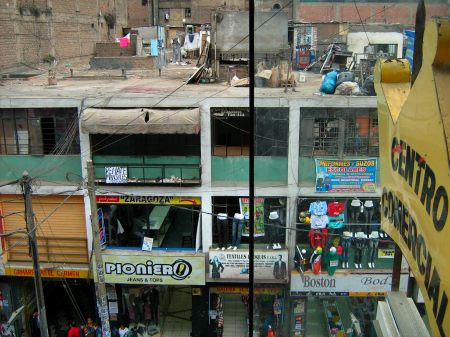 The market is poor, though. From a website called “demotix” I learned that Gamarra Market boasts the most commercial transactions per minute in Peru. It’s located right next to the wholesale market where I’d gone the week before gold and silver. In the same uncomfortable way, you don’t know if your unbleached cotton was made by factory workers being payed less than a dollar a day in bad conditions, or by a respectable company paying marginally more. People actually live in the market too, apparently, as you can see laundry hanging from lines on top of some of the buildings.
The market is poor, though. From a website called “demotix” I learned that Gamarra Market boasts the most commercial transactions per minute in Peru. It’s located right next to the wholesale market where I’d gone the week before gold and silver. In the same uncomfortable way, you don’t know if your unbleached cotton was made by factory workers being payed less than a dollar a day in bad conditions, or by a respectable company paying marginally more. People actually live in the market too, apparently, as you can see laundry hanging from lines on top of some of the buildings.
The markets gets about 150 thousand visitors per day and covers over 40 blocks with over 14,000 shops, so getting lost is common. We had to go back to a store to pick up a tailored dress (for free, of course) and almost got lost wandering down just one single street.
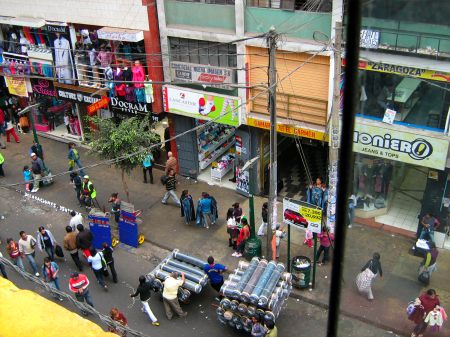 See the giants trolleys of materials all wrapped up in plastic? Those are destined for some factory somewhere. Could be domestic, could be international. But you’ll see tons of middlemen rolling them through the streets to their destinations. The number of people employed here is staggering, and the activity is constant.
See the giants trolleys of materials all wrapped up in plastic? Those are destined for some factory somewhere. Could be domestic, could be international. But you’ll see tons of middlemen rolling them through the streets to their destinations. The number of people employed here is staggering, and the activity is constant.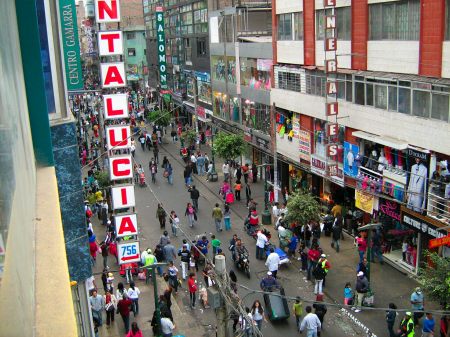 You specially need to be careful of pickpockets. There are money-changers at the entrances more than willing to change your euros or dollars for you, but walking into the market (or out) after just changing over a hundred American is not a good idea. It’s not the best area and while there are lots of people working in textiles, there are lots of people not working in textiles…
You specially need to be careful of pickpockets. There are money-changers at the entrances more than willing to change your euros or dollars for you, but walking into the market (or out) after just changing over a hundred American is not a good idea. It’s not the best area and while there are lots of people working in textiles, there are lots of people not working in textiles…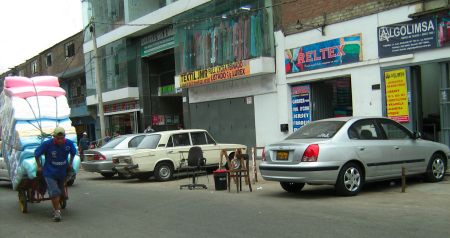 This will give you a back of steel.
This will give you a back of steel.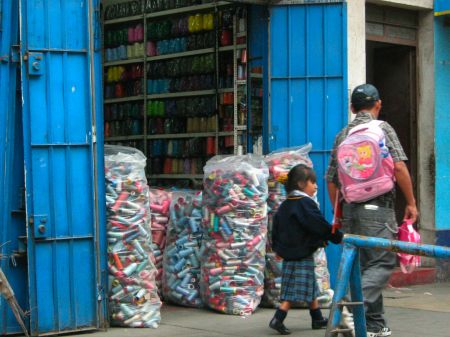 Those are ribbons. Bags and bags and bags of ribbons next to a small little shack of a restaurant serving conchitas negras (small black shells, a traditional mollusk) in the conchas’ black juice. It’s not a horribly unsafe place, though. Families walk through there all the time, and you’ll see kids in school uniforms on their own. They pick up a snack or just pass through on their way to Chinatown or the wholesale market or wherever their families work.
Those are ribbons. Bags and bags and bags of ribbons next to a small little shack of a restaurant serving conchitas negras (small black shells, a traditional mollusk) in the conchas’ black juice. It’s not a horribly unsafe place, though. Families walk through there all the time, and you’ll see kids in school uniforms on their own. They pick up a snack or just pass through on their way to Chinatown or the wholesale market or wherever their families work.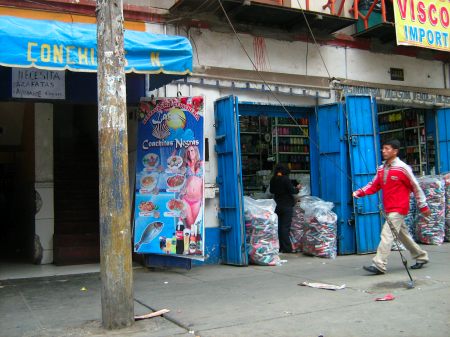

Leave a Reply